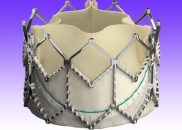Nearly all prostheses for transcatheter aortic valve replacement (TAVR) commercially available at present are adequate for most patients. However, there are certain subgroups, relatively small, that could benefit from a particular one. Yesterday we went over the best suited for small annuli, which turned out to be the self-expandable in general and the Evolut PRO…
TAVR in Small Annuli: Is There a Better Valve?
Transcatheter aortic valve replacement with the self-expandable valves has shown optimal clinical and electrocardiographic results in patients with small annuli. These supra-annular prosthetic valves seem somewhat better than the intra-annular balloon expandable. TAVR in general has better functional results in terms of patient/prosthesis mismatch. This seems especially true for patients with a small annulus. The…
Europe Advances the Transcaval Approach for TAVR
The transfemoral access is clearly the preferred approach to transcatheter aortic valve replacement (TAVR), followed by the trans-axillary or trans-subclavian. Despite the alternatives, some patients are still ineligible. This study recently published in EuroIntervention reports initial experiences in Europe with the transfemoral transcaval approach. It included 50 patients from 5 centers assessed according to the…
TAVR: Should Transradial Approach be the Second Access Site?
Courtesy of Dr. Carlos Fava. One of the major challenges we interventional cardiologists still face is access management. Reduced device diameter and improved transcatheter closure, together with increased operator experience, have significantly reduced vascular complications. However, we shouldn’t lose sight of the secondary access, usually transfemoral, generally used in case of primary access site related…
Unilateral Vascular Access in TAVR: Our Main Procedure, Increasingly Minimalist
There has been a significant decline in vascular complications in the last few years due to improvements in device profiles and operator experience on transcatheter aortic valve replacement (TAVR). Unilateral vascular access for transfemoral TAVR is as safe as bilateral access and it could be more comfortable for patients according to this study recently published…
Pre-TAVR Revascularization: Angiographic or Physiological?
In patients undergoing transcatheter aortic valve replacement (TAVR), fractional flow reserve (FFR) guided revascularization is associated with favorable results compared against the traditional angiography guided revascularization. Given the complete lack of randomized studies, this observational study is the best we have to decide how to guide revascularization in patients with symptomatic severe aortic stenosis undergoing…
AHA 2019 | Sapien vs Evolut: A Head-to-Head Study Seems Mandatory
Two French registries have carried out a propensity matched comparison which suggest differences between balloon-expandable valves (BEV) and self-expandable valves (SEV) in hard end points such as mortality. The only FDA approved commercially available transcatheter heart valves in the US are the BE Sapien 3 (Edwards Lifesciences) and the SE CoreValve Evolut PRO (Medtronic). Both…
Lower Mismatch Rate with the New Self-Expandable Valves
Prosthesis mismatch (PPM) was introduced by Rahimtoola in 1978 and happens when the effective orifice area of a heart valve prosthesis is too small in relation to patient body size. Surgical valves have been well documented, but there is little information on percutaneous valves. The study looked at 757 patients undergoing TAVR with pre and post procedural eco-Doppler…
AHA 2019 | GALILEO: Rivaroxaban After TAVI, Another Nice Theory that Clashes with Reality
In patients without formal indication for oral anticoagulation after successful transcatheter aortic valve implantation (TAVI), a treatment strategy including rivaroxaban 10 mg daily was associated with a higher risk of death or thromboembolic complications and, on top of that, a higher risk of bleeding than a conventional antiplatelet strategy. So far, we did not know whether…
AHA 2019 | GALILEO-4D: Rivaroxaban in the Prevention of Post TAVR Valve Thickening and Thrombosis
This sub study of the GALILEO specifically looked at valve thickening and reduced leaflet motion after TAVR documented with 4D CT. Whether anticoagulation with rivaroxaban might reduce or prevent this phenomenon remained unanswered. Patients receiving the same anticoagulation scheme than the general study’s (rivaroxaban + aspirin vs. aspirin + clopidogrel) were assessed by 4D CT…








